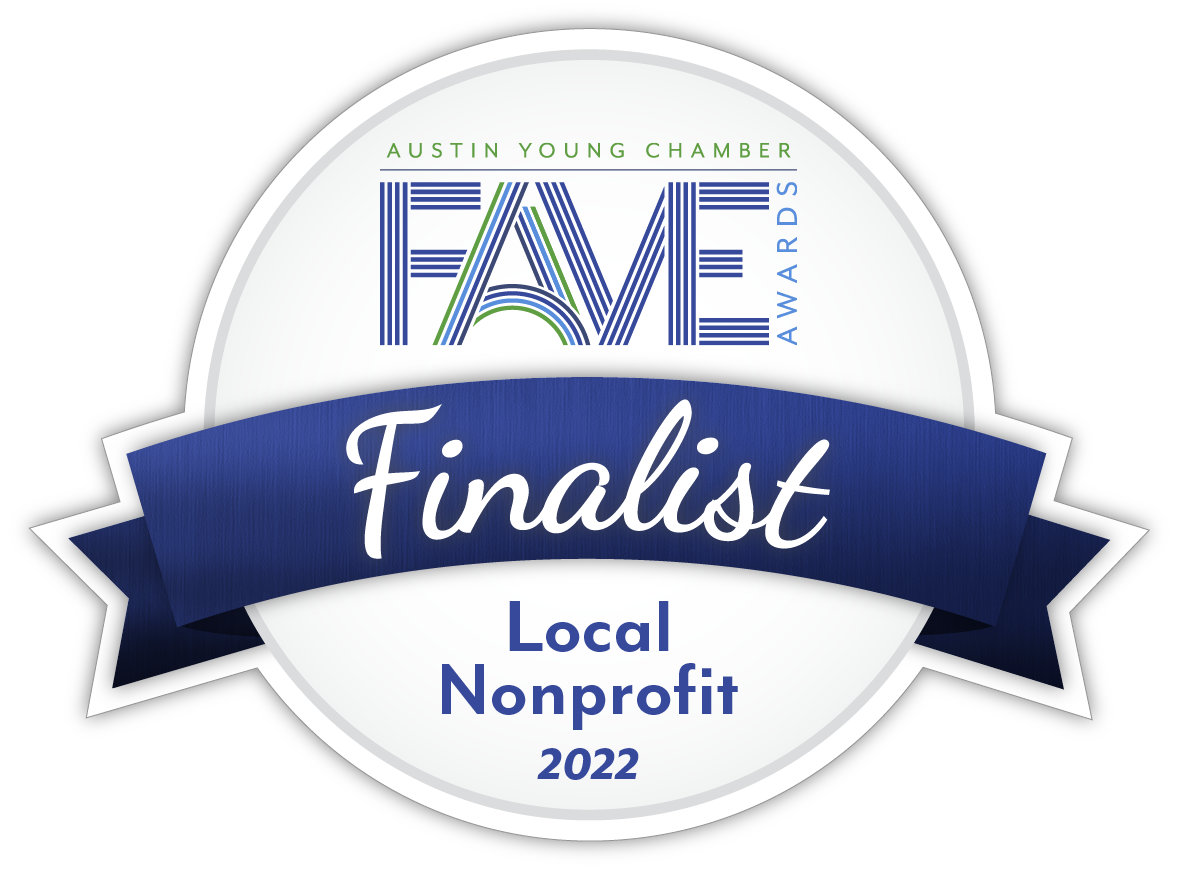 By Carolyn Lindell, Statesman.com
By Carolyn Lindell, Statesman.com
The big red firetruck usually captures all the attention at Fire Station 16, but lately residents in this Central Austin neighborhood have noticed the firehouse’s lovely gardens, bursting with robust flowers and greenery.
Spiky rosemary stands waist high, and zealous passionflower vines encircle the stop sign. Colorful retro lawn chairs look inviting under a shade tree, and dotted along the sidewalk are vibrant sage, little yellow daisies and yaupon holly with red berries, among others.
“It’s a little oasis in the neighborhood,” says Elaine Dill, who along with other volunteers and firefighters helped to revitalize the triangular patch of land in the Crestview neighborhood. “It’s beautiful out here, isn’t it?”
The fire station has been located at this odd-shaped piece of land, bordered by Grover Avenue, Reese Lane and Cullen Avenue, since 1957, according to the Austin Fire Museum. Some firefighters refer to it as “the fishbowl,” because they can be seen from all sides. “This was just a blank slate,” says Emily Wilson, who lives nearby and spearheaded the effort. Although the lawn was kept mowed, the landscaping was uninspired, and Bermuda grass had infiltrated, she says. “I realized that this place could use some TLC.”
She turned for help to neighborhood gardeners, such as Dill and Cheryl Goveia, who along with Wilson, are also an active force in sprucing up nearby Brentwood Park. Goveia, a landscape design consultant, drew up a plan that called for themed areas using native and adapted plants. An area near the flagpole is planted with patriotic colors: red roses, white lantana, blue plumbago. With input from firefighters, Goveia had multiple goals for the gardens, such as growing food, attracting pollinators, serving as a demonstration garden and spiffing up the place. “I wanted it to be so outrageously quaint,” she says, “and fit the neighborhood.”
Starting in 2010, during a series of garden workdays that drew a variety of helpers, volunteers pulled weeds, trimmed, planted and mulched – all with the aid of some firefighters, says Wilson.
“We’re gardeners, and we appreciate good physical work,” says Wilson, 45, “but there’s nothing like having three firefighters show up.”
 Fire specialist/driver Scott Van Horn, who has worked at the station for 21 years, collaborated on the project early on, taking part in workdays, helping with maintenance and doing other jobs when needed. “I would go get dirt somewhere. Stuff like that,” he says.
Fire specialist/driver Scott Van Horn, who has worked at the station for 21 years, collaborated on the project early on, taking part in workdays, helping with maintenance and doing other jobs when needed. “I would go get dirt somewhere. Stuff like that,” he says.
In an area called the Firehouse Farm, they have grown okra and tomatoes, among other edibles. Brussels sprouts, kohlrabi and strawberry plants have recently been put into the raised beds. An herb garden has provided an abundance of basil, which some of the gardeners have used to make batches of pesto.
Getting rid of the Bermuda grass proved to be a huge job, requiring much patience as the ground was covered with plastic to kill it off – although some of the persistent grass has grown back.
The project gained help from many sources – with donations of money, time and materials. The gardeners made numerous trips to a cemetery to get free rocks to line the area between the sidewalk and the curbs. They raised about $100 for plants by setting up a table at the neighborhood grocery store and asking shoppers to donate their change, Wilson says.
A nearby arborist trimmed trees, and the nonprofit organization TreeFolks contributed nine trees, Wilson says. “The firemen kept them alive and watered them, which was critical because we went through that drought,” Wilson says. Firefighter Kacy Mustain, says colleagues at other stations have made favorable remarks that Fire Station 16 isn’t “a concrete jungle.” “It’s nice driving up and seeing that,” says Lt. Bryan Kohler. “You don’t want to stand out for the wrong reasons.”
The fire station grounds also have become a National Wildlife Federation Certified Wildlife Habitat, which requires the provision of water, food, cover and a place to raise wildlife young. To provide water, they created a birdbath from an old wok placed in a gnarled log on the ground. “It’s like an art form,” Wilson says. “I think it looks dang attractive.”
Wilson also helped to acquire a grant from the City of Austin’s Neighborhood Partnering Program, which bought a composter as well as the fire-engine red and yellow chairs out front. Those replaced some rusted lawn furniture that “just needed to be put out at large trash day,” Wilson says.
Such community support is welcome, says Michelle DeCrane, spokeswoman for the Austin Fire Department. “The fire station is part of the neighborhood and part of the community, so we really encourage involvement,” she says.
Tweaking the plan as needed, the gardeners have put the last of the project in place, with firefighters watering and maintaining the gardens. One side of the lot, facing Grover Avenue, with parking spaces, a ramp and a row of garbage cans, did not lend itself to much landscaping. Still, Wilson sees the chance for a possible new endeavor, such as a mural.
“It’s an opportunity for a project,” she says.

